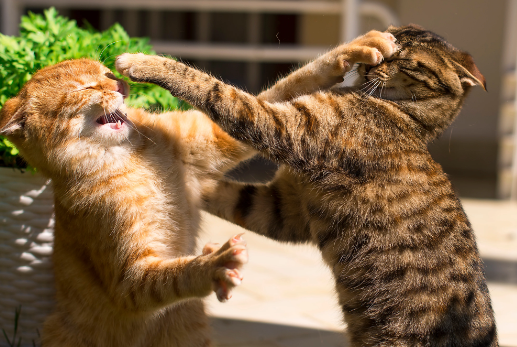Are your cats constantly engaging in aggressive fights that disrupt the peace in your home? Don’t worry, there are effective methods to put an end to their fighting and create a harmonious environment for everyone. By understanding cat behavior and implementing the right strategies, you can successfully prevent cat fights and promote a peaceful coexistence.
Firstly, it’s important to understand the reasons behind cat fights and be able to identify signs of aggression in felines. Cats may fight due to territorial disputes, resource guarding, or social hierarchy issues. By recognizing these triggers, you can address the root causes and implement appropriate preventive measures.
To create a safe environment for your cats, consider providing separate resources such as feeding stations and litter boxes. This ensures that each cat has their own space and reduces the likelihood of conflicts. Additionally, enriching their environment with interactive toys, scratching posts, and perches can help alleviate boredom and redirect their energy towards positive activities.
When introducing new cats to each other, it’s crucial to follow a gradual introduction process. This allows them to become familiar with each other’s scent and presence without feeling threatened. Controlled interactions and positive reinforcement techniques can also be employed to encourage good behavior and discourage aggression.
Managing territory and resources is another key aspect of preventing cat fights. Ensure that there are enough resources for each cat, such as multiple food and water bowls, litter boxes, and resting spots. This eliminates the need for competition and reduces the chances of conflicts arising.
If despite your best efforts, the cat fights persist, it may be necessary to seek professional help from a behaviorist or veterinarian. They can provide behavior modification techniques tailored to your cats’ specific needs and address any underlying issues contributing to the fights. In some cases, medical interventions such as medications may also be recommended to manage aggression.
By implementing these methods and seeking professional guidance when needed, you can create a peaceful and harmonious environment for your cats to thrive in. Remember, with patience and the right strategies, you can successfully stop cats from fighting and promote a peaceful coexistence at home.
Understanding Cat Behavior
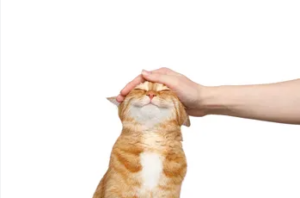
Cats are territorial animals by nature, and conflicts often arise when they feel their territory is being invaded. This can happen when introducing a new cat to the household or when there is a change in the existing cats’ hierarchy. Aggression can also be triggered by resource guarding, such as food, water, or litter boxes.
Signs of aggression in cats include hissing, growling, swatting, and biting. They may also exhibit defensive body language, such as flattened ears, dilated pupils, and a puffed-up tail. It is important to recognize these signs early on to prevent fights from escalating.
To create a harmonious environment for your cats, it is crucial to provide separate resources for each cat, such as individual feeding stations and litter boxes. Environmental enrichment, such as scratching posts, toys, and perches, can also help reduce tension and provide outlets for their natural behaviors.
By understanding cat behavior and being proactive in creating a safe and enriching environment, you can minimize the likelihood of cat fights and ensure a peaceful coexistence among your feline companions.
Creating a Safe Environment

One important aspect is providing separate resources for each cat. This includes having multiple food and water bowls, as well as litter boxes. Cats are territorial animals, and having their own designated areas for these essentials can help prevent competition and potential fights.
Another technique is environmental enrichment. Cats need mental and physical stimulation to stay happy and content. Provide them with scratching posts, toys, and climbing structures to keep them engaged and entertained. This not only reduces boredom but also redirects their energy towards positive outlets.
Additionally, ensure that each cat has their own resting areas and hiding spots. Cats, like humans, need their own personal space where they can retreat and feel safe. By providing separate resting spots, you give them the opportunity to relax without feeling threatened by other cats.
By implementing these techniques, you can create a harmonious space for your cats, reducing the likelihood of fights and promoting a peaceful coexistence.
Introducing Cats Properly
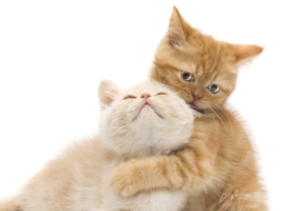
- Prepare a separate space: Before bringing the new cat home, set up a separate room with all the essentials, including food, water, litter box, and toys. This will serve as their safe haven during the initial phase of introduction.
- Exchange scents: Rub a towel on each cat to transfer their scents and then place the towels in the other cat’s space. This helps them become familiar with each other’s scent before face-to-face interactions.
- Gradual visual introductions: Use a baby gate or a cracked door to allow the cats to see each other without direct contact. This helps them get accustomed to each other’s presence.
- Controlled face-to-face interactions: Once the cats seem comfortable with visual introductions, you can start supervised face-to-face interactions. Keep initial sessions short and gradually increase their duration.
- Positive reinforcement: Reward both cats with treats, praise, and playtime during and after their interactions to associate positive experiences with each other’s presence.
Remember, patience is key during the introduction process. It may take days or even weeks for the cats to establish a harmonious relationship. If any signs of aggression or stress arise, separate them and consult a professional for further guidance.
Gradual Introduction

Here are some steps to follow for a gradual introduction:
- Separate Spaces: Start by keeping the new cat in a separate room with their own resources, such as food, water, and litter box. This allows them to become familiar with their surroundings and feel secure.
- Scent Exchange: Swap bedding or use a cloth to rub the cats’ scent on each other. This helps them become accustomed to each other’s smell, which is an essential part of the introduction process.
- Controlled Interactions: Gradually introduce the cats to each other’s presence by using a door or baby gate to create a barrier. Allow them to see and smell each other without direct physical contact.
Throughout the gradual introduction process, closely monitor their behavior and body language. If any signs of aggression or tension arise, slow down the introduction and give them more time to adjust. Remember, patience is key when introducing cats and reducing the likelihood of fights.
Positive Reinforcement
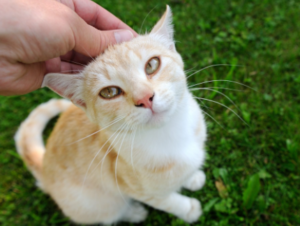
One effective method of positive reinforcement is to reward your cats with treats or praise when they exhibit desirable behavior. For example, if your cats are playing peacefully together or using their scratching posts instead of furniture, give them a treat or a gentle pat on the head. This positive reinforcement helps to reinforce the behavior you want to see more of.
Another technique is to provide environmental enrichment for your cats. This can include interactive toys, scratching posts, and climbing structures. By providing these outlets for natural feline behaviors, you can redirect their energy and prevent them from becoming bored or frustrated, which can lead to aggressive behavior.
Remember, positive reinforcement is all about rewarding the behaviors you want to see more of and creating a positive association for your cats. With patience and consistency, you can use positive reinforcement to encourage good behavior and discourage aggression in your furry companions.
Managing Territory and Resources
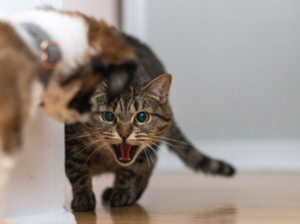
When it comes to feeding stations, it’s important to have separate bowls or plates for each cat. This prevents food aggression and ensures that each cat can eat peacefully. Additionally, placing the feeding stations in different areas of the house can help create a sense of ownership for each cat.
Litter boxes should also be provided in multiple locations. Cats are territorial animals, and having their own designated litter box can help prevent conflicts. It’s recommended to have one litter box per cat, plus an extra one. This not only prevents resource guarding but also ensures that each cat has access to a clean and comfortable space to do their business.
Furthermore, consider providing vertical spaces and hiding spots for each cat. This can be in the form of cat trees, shelves, or even tall furniture. These elevated areas give cats a sense of security and ownership over their territory, reducing the need to fight for space.
By implementing these strategies, you can effectively manage territory and resources, creating a peaceful environment for your cats to coexist harmoniously.
Seeking Professional Help

Consulting a professional is especially necessary if the cat fights are frequent, severe, or escalating in intensity. A behaviorist or veterinarian can assess the situation and provide personalized advice and guidance based on the specific needs of your cats.
They can conduct a thorough evaluation of your cats’ behavior, identify any underlying issues or triggers, and develop a comprehensive behavior modification plan. This plan may include techniques such as desensitization, counter-conditioning, or environmental modifications to create a more peaceful and harmonious environment for your cats.
Additionally, a professional can help determine if there are any medical conditions contributing to the aggression and recommend appropriate medical interventions if necessary. They can also provide guidance on how to manage and prevent future conflicts, ensuring the safety and well-being of your cats.
Behavior Modification Techniques
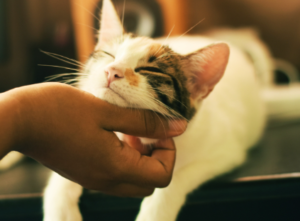
- Positive Reinforcement: This technique involves rewarding desired behaviors with treats, praise, or playtime. By reinforcing good behavior, cats can learn to associate positive experiences with calm and non-aggressive actions.
- Desensitization: This technique involves gradually exposing cats to the triggers that cause aggression, such as other cats or specific situations. By starting with low-intensity exposure and gradually increasing it over time, cats can learn to tolerate these triggers without resorting to fighting.
- Counter Conditioning: This technique involves pairing the presence of the trigger that causes aggression with a positive experience, such as treats or play. This helps cats associate the trigger with something pleasant, reducing their aggressive response.
- Redirected Aggression: In cases where cats redirect their aggression towards each other, this technique involves redirecting their attention to an alternative outlet, such as interactive toys or scratching posts. By providing appropriate outlets for their energy, cats can avoid engaging in fights.
It’s important to note that behavior modification techniques should be implemented under the guidance of a professional behaviorist or veterinarian. They can assess the specific situation and provide tailored recommendations to address the underlying issues contributing to cat fights.
Medical Interventions
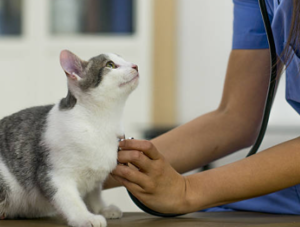
When dealing with aggressive behavior in cats, it is essential to consult with a veterinarian. They can assess the cat’s overall health and determine if any medical interventions are necessary. In some cases, medications may be prescribed to help manage aggression and reduce the likelihood of fights.
Additionally, other interventions may be recommended by the veterinarian to address the underlying medical issues and manage the aggression. These interventions could include changes in diet, environmental modifications, or behavioral therapy techniques.
It is crucial to remember that medical interventions should always be carried out under the guidance of a professional. A veterinarian or animal behaviorist will have the expertise to provide the appropriate medical care and behavioral support to help manage aggression in cats effectively.
Frequently Asked Questions
-
- Q: Why do cats fight?
A: Cats may fight due to territorial disputes, competition for resources, or social hierarchy. It can also be a result of fear, stress, or redirected aggression.
-
- Q: How can I tell if my cats are fighting or playing?
A: While play fighting may involve chasing, pouncing, and wrestling, it is usually gentle and accompanied by relaxed body language. On the other hand, fighting involves hissing, growling, and aggressive behavior such as biting and scratching.
-
- Q: What can I do to prevent cat fights?
A: Creating a safe environment with separate resources like food bowls, litter boxes, and resting areas can help reduce conflicts. Additionally, providing environmental enrichment, such as scratching posts and toys, can help redirect their energy.
-
- Q: How should I introduce new cats to each other?
A: Gradual introductions are crucial. Start by keeping the cats in separate rooms and gradually allow them to see and smell each other through a door crack. Slowly progress to supervised face-to-face interactions, rewarding positive behavior with treats or praise.
-
- Q: When should I seek professional help?
A: If the cat fights persist or escalate, or if there are injuries involved, it is advisable to consult a professional behaviorist or veterinarian. They can assess the situation and provide guidance on behavior modification techniques or medical interventions if necessary.
-
- Q: Can medical conditions contribute to cat fights?
A: Yes, underlying medical conditions such as pain, hormonal imbalances, or neurological issues can contribute to aggression in cats. A veterinarian can evaluate the cat’s health and recommend appropriate medical interventions if needed.
